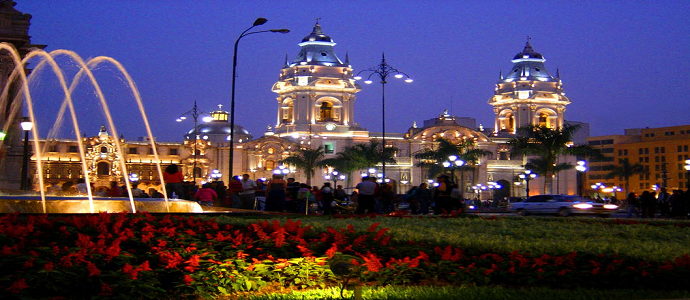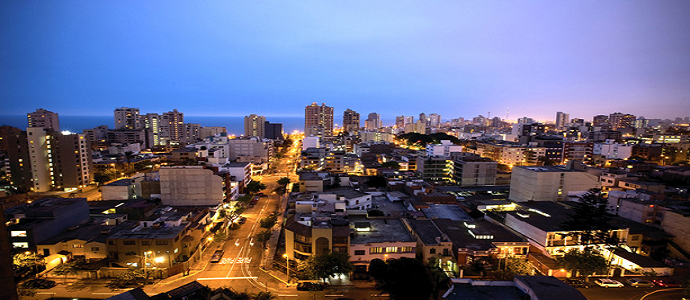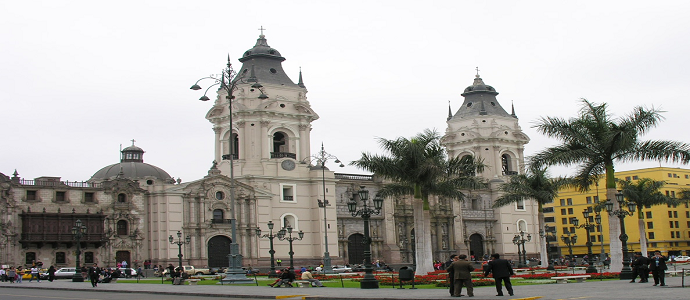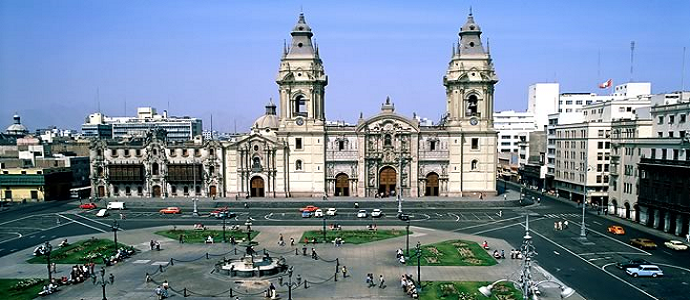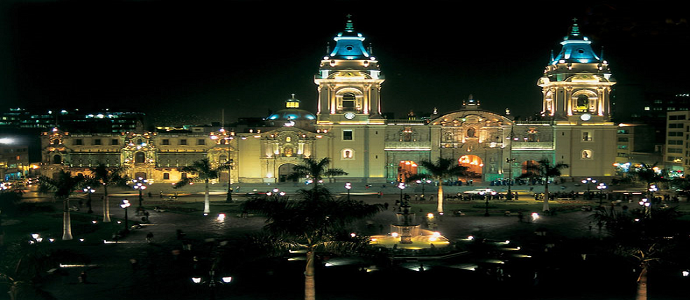Constructed within the banks of Rio Rimac, Lima is the capital and largest city in Peru. Created in 1535 by Francisco Pizarro, Lima was adopted as being the headquarters of the Spanish Conquistadors., essentially situated to the adjoining fertile plaines, irrigated by way of the Rimac, as well as its proximity towards the natural harbour at Callao. Lima quickly took over as the administrative and commercial core of the Spanish Empire in Southern America, delivering affluence to the city, until finally an earthquake in 1746 destroyed everything, bar about twenty properties. After this catastrophe the decision was taken to ornately reconstruct the city. Today’s broad streets, enormous plazas and aged residences with ornately etched balconies certainly are a legacy of this period in history.
Downtown Lima is noticeably Spanish, having a colonial feel. The streets adhere to a checked design all around the Plaza de Armas, flanked by the Cathedral, the Palacio de Gobierno, along with many other important buildings.
Street names might be confusing and difficult to read here, as a result of the combination of new and old names. The pedestrian thoroughfare Jiron de la Union includes quite a few shops and is a great destination for a stroll. There are several recreational areas, parks and gardens in the direction of the southern area of downtown, encompassing Plaza Grau.
By far the most enjoyable downtown locations are those throughout the major plazas, notably, Plaza San Martín, Plaza de Arms, Parque Italiano and Parque Universitario. These areas have impressive buildings and are also safe to explore during working hours as a result of a large police presence.
The Cathedral La Catedral is well worth a visit. It was originally built in 1555 and had been damaged by the 1687 earthquakes, and was almost completely destroyed. The cathedral has fascinating woodcarvings inside the choir stalls and the altars are very finely coated in silver.
The Museo de Oro Del Peru also found in Lima is really two museums combined into one. Its enormous Gold Museum has 1000s of gold artifacts, each and every one uniquely sculptured into something else entirely, from clothing decorations to ear plugs.
Probably the greatest reasons for exploring Lima in Peru, is to encounter the everyday Peruvian life, which centres around and on its plazas. Lima’s plazas are a fine example of this, and a visit to this city should not exclude this delight.
Lima is among the most fascinating and demanding urban centres in Southern America, and has a large historical, cultural and archaeological past. The majority of its treasures may well be concealed, however, they are worthy of seeking out. For many people Lima is simply an inescapable must; a chaotic, sprawling, ugly metropolis, the beginning and concluding point on his or her journey, to more of the intriguing and exciting gems Peru has to offer. However this presumption does not do justice to Lima.
Viewing Lima as an entrance into Peru, and hurrying through this unique city, you may overlook an essential part of what Peru is today. Lima is definitely worth being seen as a destination in itself. Take the time to acclimatize oneself, glimpse behind the occasionally topsy-turvy ugly exterior, and explore the highlights Lima has to offer. You may be pleasantly surprised and impressed.

